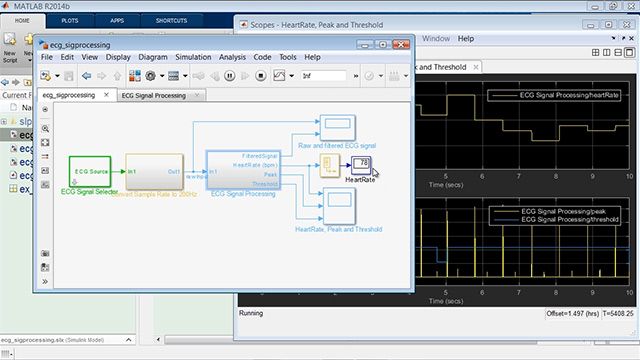Top 5 Reasons to Use MATLAB for Deep Learning
Learn how MATLAB® can help with any part of the deep learning workflow: from preprocessing through deployment. This video provides a high-level overview of deep learning with MATLAB. It describes the complete workflow, and it shows how MATLAB can help with deep learning applications at various stages, including importing and preprocessing images, importing pretrained models, training models with GPUs, debugging deep learning results, and deploying deep learning models to hardware including embedded GPUs.
Published: 27 Sep 2019
Deep learning continues to gain popularity, expanding to nearly every application. However, it's a challenging task to go from a deep learning model to a real AI-driven system. Here are five reasons to use MATLAB® for your next deep learning application:
MATLAB has interactive deep learning apps for labeling.
This includes signal data, audio data, images, and video.
Often, people underestimate the amount of time needed to label data, so apps that help automate this process can get you to training models and seeing results quicker.
MATLAB can help with generating synthetic data when you don’t have enough data of the right scenarios.
In the case of automated driving, you can author scenarios and simulate the output of different sensors using a 3D simulation environment.
In radar and communications, this includes generating data for waveform-modulation-identification and target classification applications.
MATLAB has a variety of ways to interact and transfer data between deep learning frameworks.
MATLAB supports ONNX to import and export models between other frameworks. A model designed in PyTorch, for example, can be brought into MATLAB, and models trained in MATLAB can be exported using the ONNX framework.
MATLAB also supports Python interoperability: You can call Python from MATLAB and MATLAB from Python.
We continue to expand our support for pretrained models which have been tested and vetted by deep learning experts.
Next, in addition to C, C++, and HDL, MATLAB creates optimized deep learning CUDA code for NVIDIA GPUs, including the preprocessing and post processing code required to run the entire algorithm.
Optimized CUDA with TensorRT makes inference very fast. And the code can be deployed to embedded NVIDIA GPUs.
Finally, MATLAB has specialized toolboxes and functionality specifically for:
- Reinforcement Learning
- Automated Driving
- Natural Language Processing
- Medical Image Processing
- Computer Vision
Not to mention incorporating other techniques like traditional machine learning and data science.
We also have advanced features like GANs, automatic differentiation, and the ability to analyze and debug layers.
You can get a free trial of our deep learning software on our web site. If you’re just starting out or have been working in another deep learning framework, we have lots of examples and videos to help you get started quickly in MATLAB.





